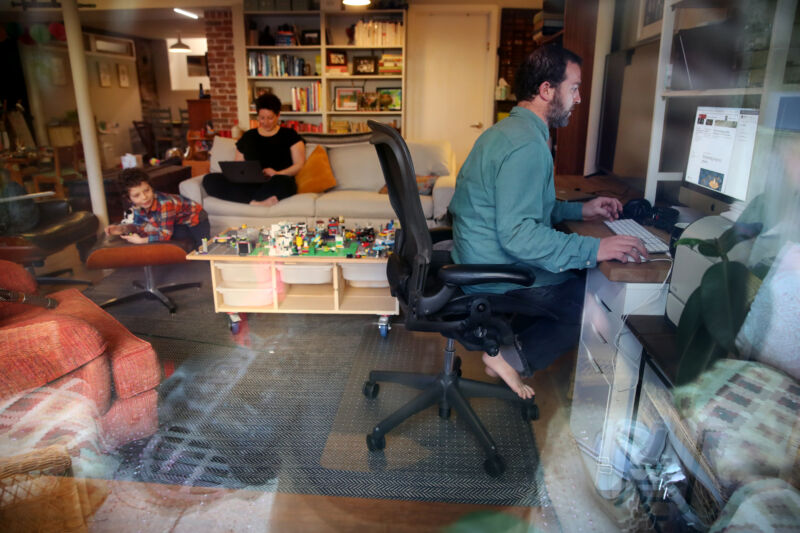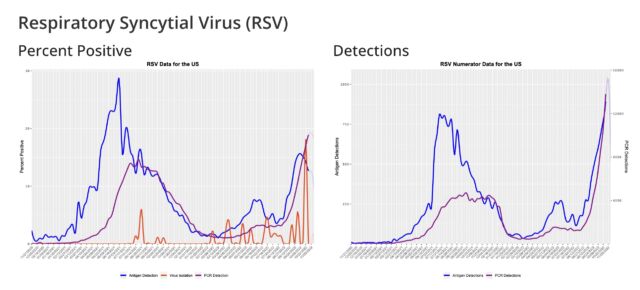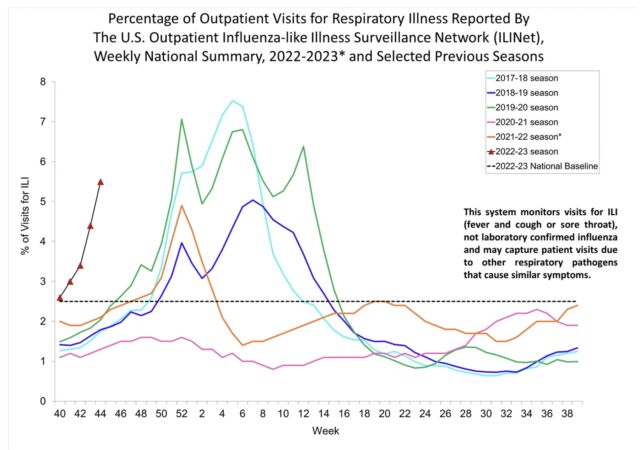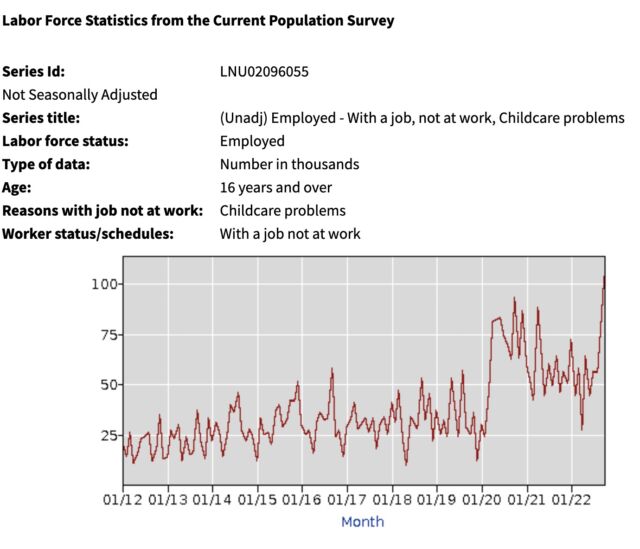
Respiratory disease is raging this fall, with children being hit particularly hard. Cases of flu-like illnesses are starting surprisingly strong and early this season. RSV – respiratory syncytial (sin-SISH-uhl) virus – continues to skyrocket. A stew of SARS-CoV-2 variants simmers in the background. And the mob of common cold-season viruses, such as rhinoviruses and enteroviruses, are also doing the rounds.

With the rise in infections, children’s hospitals across the country have reported being full or overwhelmed, as Ars has previously reported. But another effect of the virus crush is a strain on the workforce. As The Washington Post first reported Tuesday, last month the US broke the record for people missing work due to childcare issues, such as making children sick at home and daycare or closing schools due to staff shortages and illness.

According to data from the U.S. Bureau of Labor Statistics, more than 100,000 working Americans missed work in October because of childcare problems. That’s more missing workers than any other month in recent data, including the entire COVID-19 pandemic, which saw many childcare facilities and schools closed for extended periods of time. At the height of pandemic shutdowns in 2020, the number of Americans missing work due to childcare issues only reached the low 90,000 mark.

The employment statistics are another reminder of the massive impact respiratory virus transmission continues to have on Americans. Like SARS-CoV-2, the transmission of RSV, flu and other seasonal viruses can be reduced through simple health measures such as wearing a mask, avoiding crowds, staying home when sick and hygiene measures. But the White House and the Centers for Disease Control and Prevention have backed away from encouraging Americans to take such health measures.
Outlook
With the pandemic relatively quiet, COVID-19 vaccines readily available, and Americans collectively fed up with the pandemic measures, most of the country has returned to pre-pandemic activities. But there are plenty of indications that the situation in the US could worsen as fall and winter progress. For example, flu season is not yet at its peak, and the CDC has reported that a lower-than-normal number of Americans have received their annual flu shot.
While COVID-19 cases and hospitalizations remain relatively low, nearly 28,000 Americans are hospitalized with the pandemic virus and nearly 300 die each day. While the updated booster dose provides strong protection against serious illness, only 31.4 million Americans — 10 percent of those eligible for the boosters — have received one. Meanwhile, new omicron sublines continue to evolve, eliminating therapies, such as monoclonal antibodies. And experts are still concerned that a completely different SARS-CoV-2 variant could abruptly emerge again, just like Omicron did around this time last year, sparking another massive wave of illnesses, hospitalizations and deaths.
Still, at a summit hosted by Stat News on Tuesday, White House COVID-19 coordinator Ashish Jha offered a rosy outlook for the remainder of the winter, saying he did not foresee a COVID-19 wave that was caused by holiday gatherings, as seen with last year. micron wave. “We are in a very different place and we will stay in a different place,” he said, adding that most Americans have received at least one dose of the COVID-19 vaccine and many are already infected.
“We’re at a point now where I think if you’re up to date on your vaccines, you’ll have access to treatments…there really shouldn’t be any restrictions on people’s activities,” Jha said. “I live much like I lived in 2019.”

